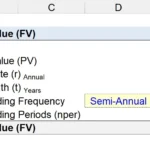In the digital age, video content has emerged as a powerful tool for engagement on social media platforms. Effective video editing can significantly enhance the quality and impact of your content. Here’s a comprehensive guide to help you master video editing for social media.
Understanding the Basics
1. Choose the Right Software:
- Beginner-Friendly: iMovie (Mac), Windows Video Editor (Windows), and Adobe Premiere Rush.
- Intermediate: Adobe Premiere Pro, Final Cut Pro.
- Advanced: DaVinci Resolve, Avid Media Composer.
2. Learn Key Editing Techniques:
- Cutting: Removing unnecessary parts of the video.
- Transitions: Smoothly moving from one scene to another.
- Color Correction: Adjusting the colors to enhance the video’s visual appeal.
- Audio Editing: Enhancing sound quality and adding background music or sound effects.
Optimizing for Different Platforms
1. Instagram:
- Format: Square (1:1) for feed, vertical (9:16) for Stories and Reels.
- Duration: 1 minute for feed, 15 seconds for Stories, 60 seconds for Reels.
- Tips: Use captions, add stickers and polls for engagement.
2. Facebook:
- Format: Landscape (16:9) or square (1:1).
- Duration: Up to 240 minutes, but shorter videos (1-3 minutes) perform better.
- Tips: Include subtitles for accessibility, use engaging thumbnails.
3. YouTube:
- Format: Landscape (16:9).
- Duration: No limit, but optimize for viewer retention.
- Tips: Use end screens and cards for engagement, optimize for SEO with keywords.
4. TikTok:
- Format: Vertical (9:16).
- Duration: 15-60 seconds.
- Tips: Use trending music and effects, keep it fast-paced and engaging.
Creating Engaging Content
1. Storytelling:
- Craft a narrative that resonates with your audience.
- Use a clear beginning, middle, and end to keep viewers engaged.
2. Visuals:
- High-quality footage and graphics.
- Consistent branding elements like logos and color schemes.
3. Sound:
- Clear audio with minimal background noise.
- Use royalty-free music to avoid copyright issues.
Advanced Techniques
1. Motion Graphics:
- Add animated elements to make your videos more dynamic.
- Tools like Adobe After Effects can help create stunning motion graphics.
2. Green Screen:
- Use chroma key to replace the background with any image or video.
- Great for tutorials, interviews, and creative content.
3. Multi-Camera Editing:
- Sync footage from multiple cameras for a professional look.
- Ideal for events, interviews, and live performances.
Best Practices
1. Keep it Short and Sweet:
- Attention spans are short on social media. Aim for concise, impactful videos.
2. Use Captions:
- Many viewers watch videos without sound. Adding captions ensures your message is conveyed.
3. Consistency:
- Maintain a consistent style and format across your videos to build brand recognition.
4. Analytics:
- Track performance metrics like views, engagement, and retention rates.
- Use this data to refine your editing and content strategy.
Conclusion
Mastering video editing for social media requires a blend of technical skills, creativity, and a deep understanding of your audience. By optimizing your content for different platforms, employing advanced techniques, and following best practices, you can create engaging videos that captivate your audience and drive meaningful engagement. Happy editing!










